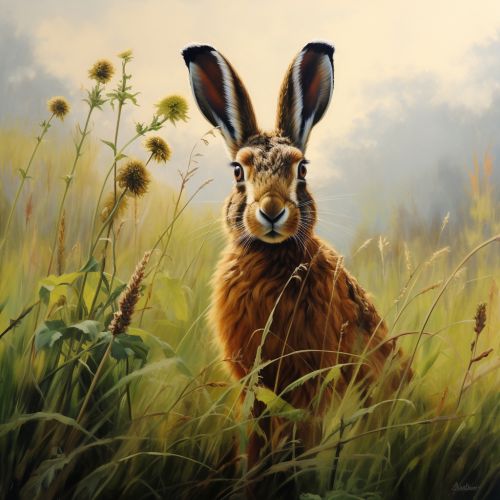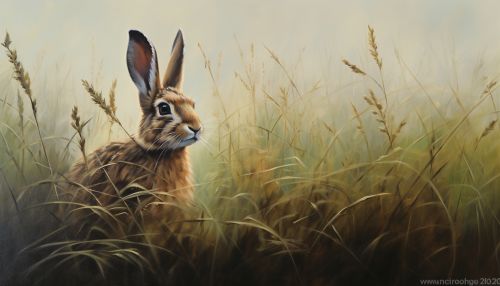European Hare
Taxonomy and Description
The European hare (Lepus europaeus), also known as the brown hare, is a species of hare native to Europe and parts of Asia. It is among the largest hare species and is adapted to temperate, open country. Hares are herbivorous and feed mainly on grasses and herbs, supplementing these with twigs, buds, bark and field crops, particularly in winter.


Their bodies are capable of enduring the cold weather of the north through a dense layer of fur, which also offers the hares some camouflage in the environments they inhabit. The European hare's fur color can range from yellowish to grayish-brown, displaying a pale belly and a white tail. The fur color is grayer in winter and more reddish in summer. They have long, powerful hind legs and shorter front legs for speed and jumping. Their eyes are large and set high on the sides of their heads, giving them a good all-round vision to watch for predators.
Behavior and Ecology
European hares are primarily nocturnal and spend a third of their time foraging. They are very individualistic and have perhaps the most solitary habits of all our lagomorphs. Unlike rabbits, hares do not dig burrows but make a small nest in long grass – a ‘form’ – where they spend much of the day, tucked in and hidden from predators.
During breeding season, hares can be seen in broad daylight chasing one another around in fields. This behavior is known as "boxing" and is where the phrase "mad as a March hare" comes from. It was once thought that this was inter-male competition, but closer observation has revealed it is usually a female hitting a male, either to show she is not yet ready to mate or as a test of his determination.
Reproduction and Lifespan
The breeding season for hares is long, from January to August, and females can have three to four litters a year, each with two to four young. The gestation period is about 42 days, and the young, called leverets, are born fully furred and with their eyes open. They are left alone by their mother in forms, where their coloration makes them hard to see. The mother returns to feed them in the evening.
Hares can live for up to twelve years, but a lifespan of three to four years is more common, and many die in their first year. Predators of hares include the red fox, golden eagle, and various hawks and owls, as well as humans.
Conservation Status
The European hare is listed as being of least concern by the IUCN because it has a wide range and is moderately abundant. However, populations have been declining in mainland Europe since the 1960s, at least partly due to changes in farming practices. In Britain, the population has declined by more than 80% in the last 100 years, due to factors such as changes in land use, intensive farming practices, and hunting.
